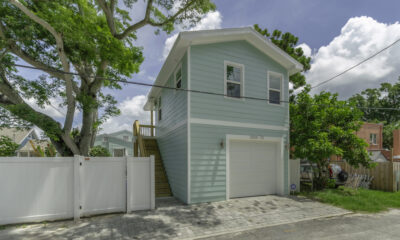What could Tampa Bay look like in 2045? Transportation plays a huge role
Have you ever wondered what Tampa Bay might look like in the year 2045? Projections show that over a million more people could be living and working in Tampa Bay, already one of the top 20 most populated regions in the country. If the region continues to advance on its current trajectory, if more people migrate into our cities and construction continues to flourish, what could that mean for the already strained transportation infrastructure?
That’s exactly what It’s TIME (Transportation, Innovation, Mobility for Everyone) Tampa Bay is asking residents to consider. The campaign is a collaboration between metropolitan planning organizations of three major counties in the Tampa Bay area. For the first time, the initiative is inviting residents of the Pinellas, Pasco and Hillsborough counties to provide input for what they would like to see for the future of Tampa Bay’s transportation infrastructure.
It’s TIME Tampa Bay is asking all residents to fill out a survey, which takes about 10 minutes. In the survey, residents are given three broad transportation and land use scenarios, exaggerated to the extent of their possible repercussions for the Tampa Bay area. The survey asks residents to consider each of the scenarios and rate them based on their needs and preferences.
The three scenarios include investment in:
1) “new technologies” (autonomous vehicles, bus rapid transit routes)
2) expressway lanes to create an “outer loop” to bypass the center of the region
3) bus and rail services (as well as water ferry options)
As many residents are aware, transportation is not a singular issue. It has major repercussions for the business community, for equity, for regional connectivity and for disaster preparedness. Concerns around transportation have risen as the Tampa Bay area has grown into a hub for more than just tourism, with an increasing number of full-time residents and focuses in tech and innovation.
“Increasingly, we’re hearing from more and more people that transportation is the number one hot button issue,” says Whit Blanton, Executive Director of Forward Pinellas.
The Tampa Bay region’s numerous governmental agencies have also recently begun collaborating, realizing that the region is stronger when unified. A major example came in 2017 when Tampa and St. Petersburg mayors bid as one region for Amazon’s HQ2.
“We are stronger as a region when we work together, when we tackle issues together,” said Blanton. “And I think we’re ready for that.”
Twenty-plus years in the future may seem too far away to worry about for some. But, according to the council’s leadership, the building blocks for what could happen in 20+ years are starting with the policy decisions of today. The responses to the survey could give decision-makers grounds to understanding what the public wants.
Take the survey here.



